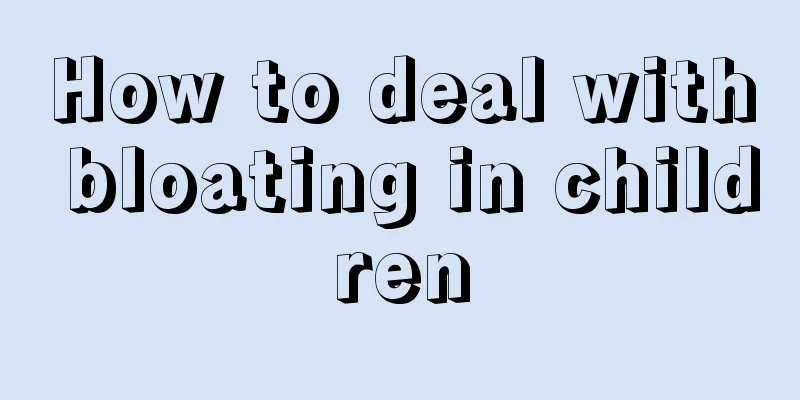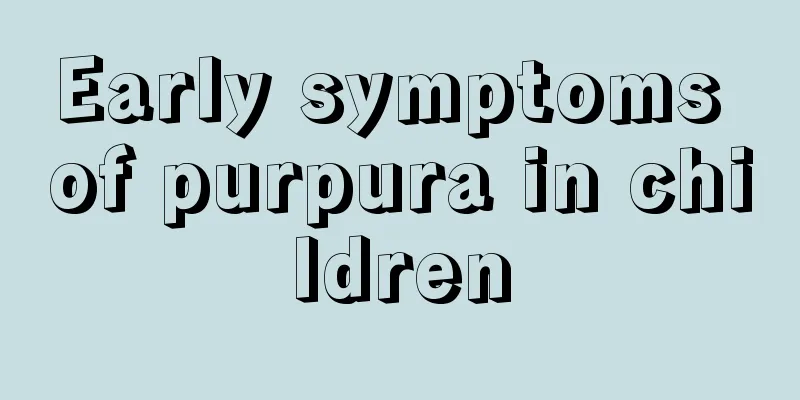Why does the baby cry when exposed to the wind?

|
The baby is the center and focus of every family. The child's every move touches everyone's heart. It is even more heartbreaking for the mother to see the baby crying when exposed to the wind, because the baby cannot speak and the baby's various functions are not perfect. Therefore, it is recommended that you go to a regular hospital for examination as soon as possible, because there are many reasons for the baby's tears when exposed to the wind. If we blindly use medicine ourselves, it will delay the baby's best treatment time. The human eye has a basic, normal amount of tear secretion to keep the surface of the eye moist and lubricated. When there is a foreign object in the eye, the alternation between hot and cold is too rapid, the corneal epithelium is damaged due to inflammation when you have a cold, or the tear duct is narrowed or blocked, the eyes will secrete tears. This is actually a self-protection mechanism of the human eye. In winter, due to the dry weather, when you go out, the tear glands of your eyes are suddenly stimulated by the cold air, which causes a temporary increase in tear secretion. At the same time, the sphincters around the lacrimal ducts undergo spasmodic contraction due to the stimulation of the cold air, making the already small tear puncta and lacrimal ducts even thinner, making it impossible to discharge all the excess tears at once, resulting in tearing. If tearing is severe, the following four lesions should be suspected: 1. Punctal eversion or occlusion: The punctal is the upper opening of the tear duct, just like the source of a river. Tears will occur if the punctal is blocked or positioned abnormally. 2. Lacrimal duct rupture, stenosis, inflammation or occlusion: This situation often occurs due to eye trauma, inflammation, and infection, which leads to scar stenosis or blockage, resulting in tearing. 3. Dacryocystitis and nasolacrimal duct obstruction are common ophthalmic diseases: the main symptoms are tearing, mucous or purulent secretions. It is caused by tear retention due to nasolacrimal duct obstruction and infection. 4. Conjunctivochalasis: This is caused by the relaxation of the conjunctiva on the surface of the eye, which forms wrinkles at the edge of the lower eyelid, affecting the circulation of tears and causing tearing. Here I would like to remind you to pay attention to eye hygiene and wash your hands before touching your eyes. Don't let your baby watch TV or computer. Let him pay more attention to rest and do more outdoor exercise, but be careful not to let cold wind blow his eyes. If your baby has eye discomfort, be sure to take him to the hospital for regular examination and treatment. Never take medicine on your own, which will delay the best treatment time for your baby. |
<<: What's wrong with the newborn baby having small red spots all over his body?
>>: Symptoms of autism in children
Recommend
What should I do if my baby has a fever after vaccination?
Fever is a common phenomenon, but many babies wil...
What should I do if my eight-month-old child has recurring fever?
Getting married, having children, and raising and...
What causes children's cold hands and feet?
Many young children have cold hands and feet, whi...
What are the symptoms of high muscle tone in children?
The symptoms caused by high muscle tone mainly in...
What should I do if my child has kidney problems?
The problem of poor kidney mainly occurs in middl...
What are the dangers of teenage obesity?
As a growing generation, teenagers are the sun of...
Children's vaccination schedule
Friends who have children at home should all know...
Is it normal for a 7-year-old to fart frequently?
Farting is a very common phenomenon in our lives....
Sequelae of hypoxia in infants' brain
Every child is the treasure of the family, so we ...
What are the treatments for mycoplasma infection in children?
Mycoplasma is a prokaryotic organism. Although it...
What should we pay attention to when children have asthma?
Bronchial asthma (abbreviated as asthma) is a chr...
Genetic law of overbite
As we all know, children are born from the combin...
What causes red eyes and lots of eye mucus in children?
Eye mucus is a normal secretion that appears in t...
What should I do if my baby is allergic to milk?
Allergy is a very common phenomenon. Generally sp...
How to exchange blood for neonatal hemolysis
I believe many people have heard of neonatal hemo...









